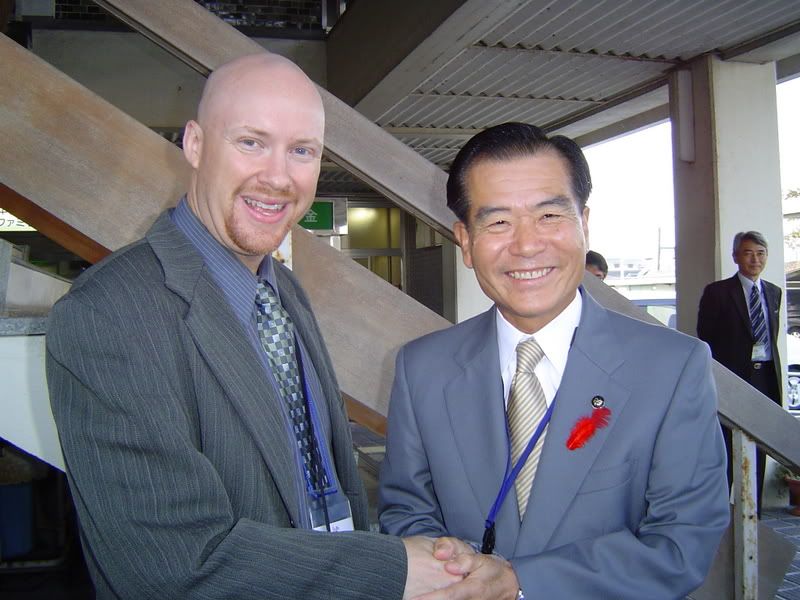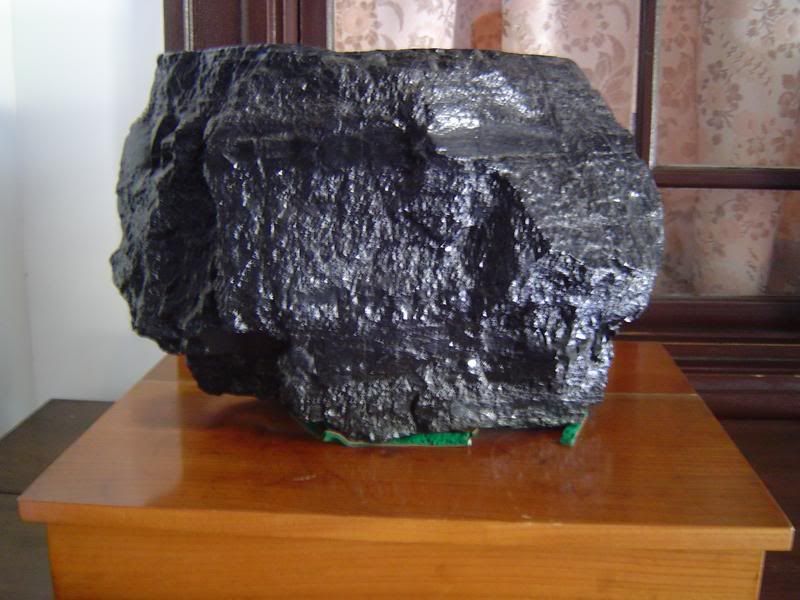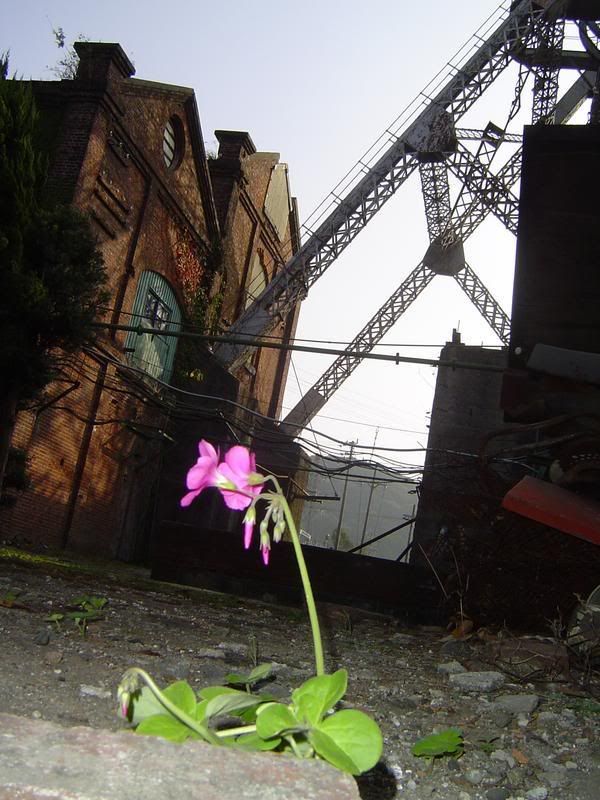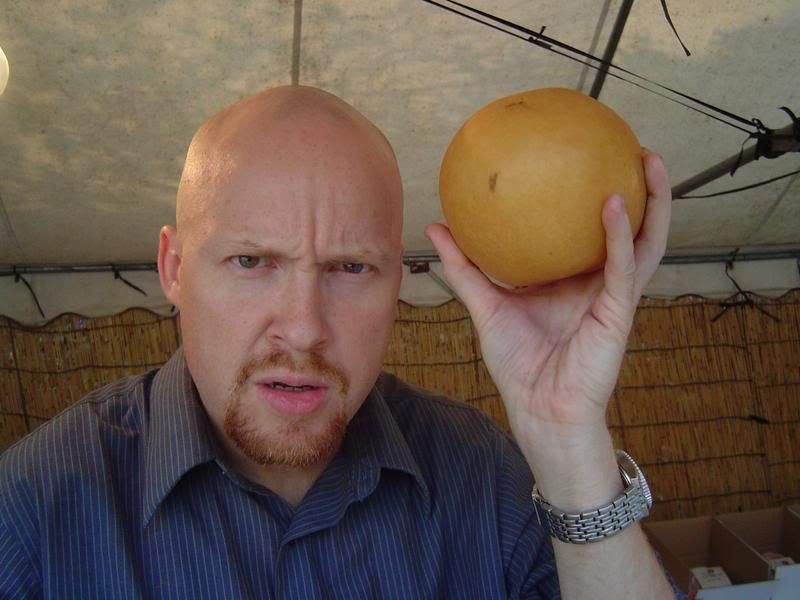10-10-06 Tuesday "Mayor"

Tuesday, October 10, 2006 “Mayor & Me”
Today, bright and early, we met the Mayor of Arao (whose name I will insert here later, as I do not have my notes at this time.) Homes was mad cool yo! He hung out with us and laughed at our stupid jokes. We presented gifts to him, and then had a Q & A session about Arao.
Arao city is located at the furthest northwestern point of Kumamoto Prefecture. The northern border of Arao neighbors Omuta City of Fukuoka Prefecture, where we stayed the first night (Omutu Graden Hotel) and also where we landed (Fukuoka Airport.) To the east lies Tamana City and Nankan Town of Tamana County. To the south, Taimei and Nagasu Town of Tamana County. The west of the city faces the Ariake Sea, beyond that lie Nagasaki and Saga Prefectures.
Arao is 57.15 square kilometers in size (10km wide, 7.5km long). The famous Mount Shodai is the highest point in Arao at 501.4 meters high and lies on the east part of the city. The mountain gently slopes down to the Ariake Sea. Arao is additionally home to four major rivers. The Seki, Ura, Nakiri and Yukusue. All run either westerly or southerly towards the Ariake sea from Mt.Shodai.

Arao was once a HUGE coal mining town, but it has since lost a great deal of its population, due to the closing of the Mitsui Coal Mine's back some 11 years ago. The population of Arao City according to the recent survey of March 2003 is 57,771(m: 27,074, f: 30,697). There are 14,505 citizens, 25% of the whole population are over 65 years old, and the percentage of this age group is increasing. The total population of Arao exceeded 63,000 in 1985, before the Mitsui Mine's closure. (At the end of the week, I am looking forward to visiting the now defunct mining site.)

Some schools that once housed 1,500 children have now been looking at declining enrollments down 1,000 students or more. Currently, Arao's political concentration is on tourism, to try and lure people back to this once heavily populated land. A recent hope to pull in numbers by tourists is in its two big amusement parks, Mitsui Greenland and Ultraman Land.
The Agriculture Industry is rich. The Niitaka Pear, also known as the Jumbo Pear is Arao’s famous agricultural product. The Niitaka pear is a huge product grown across the entire city. The pear is round and brown literally is about the size of a bowling ball – no joke!

After taking a group photo for a local magazine, we got on the bus and made a pit stop at a famous feudal bridge that is over 400 years old. At a small building in the lot of the bridge stop that sold produce, I grabbed a Kumamoto for about $4 bucks and sold the others off. It was REALLY super good. It tasted like a mild apple and was an orangish color. It is not because I didn’t like it that I sold the others off, quite the contrary. The real reason was that the Kumamoto pear is the size of a honeydew melon!
I took some pictures of the 400-year-old bridge that helped feudal lords make it to their next assignment safely. From what I learned, the lords were reassigned on a regular basis for a precautionary reason by the King, as not to have one stay in one place for too long and gain too much power.
Just a point to add… There was Japanese graffiti in kanji on the walls at this rest stop!!!
Next I went to Kumamoto University. An English teacher from the states (more precisely New Jersey) named Al Rosen led us on a little tour. We stopped first in a building that actually functions as a museum of the university’s history. A number of interesting scrolls, pictures of classes from 50 years ago and a number of artifacts lined many rooms on this two floor establishment.
Next we went to another building and Al Rosen introduced some local artists who played an interesting violin/koto (Japanese harp) two-piece accompaniment. (The violinist had a number of high pitched finger plucking solos which rocked the house, no less I must say in deed.)
Finally, they followed my concept of less is more! We were given a chance, 45 minutes or so, to speak with a student and pick their brains. My student was named Akira. It was interesting to learn how much American culture he knew about.
He told me that he really wanted to travel to USA one day, but had only enough for the flight and wanted to tent somewhere to save money while at the same time see a city. Another teacher recommended Seattle to him. He seemed receptive.
I really raised his interest when I told him that he could live off McDonalds cheap.
“In Japan, burger is 280 yen… In USA, cheese burger is 100 yen…”
“Oh good,” said Akita.
“DOUBLE,” I added.
“OH YES! Ohhhh! Hei!”


0 Comments:
Post a Comment
<< Home